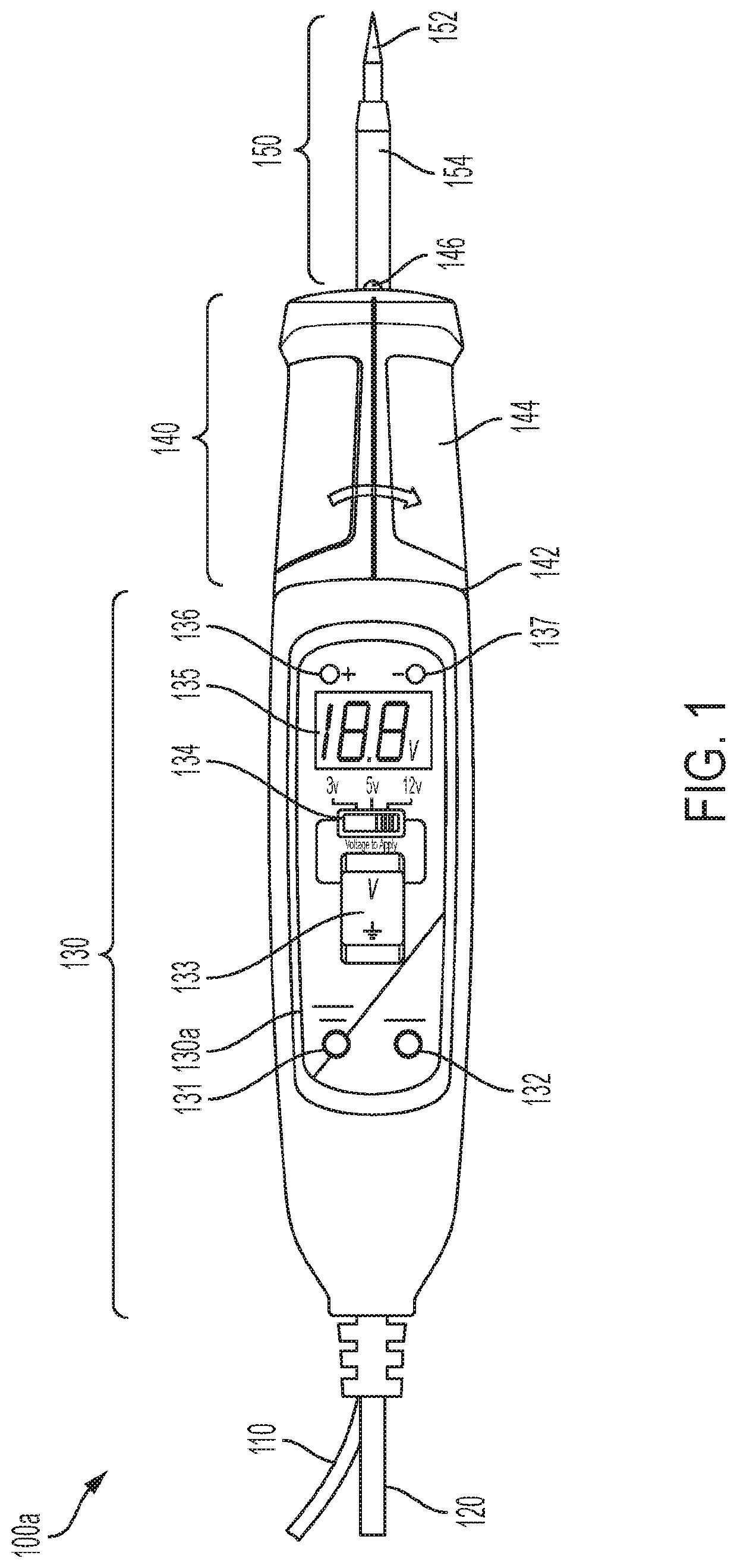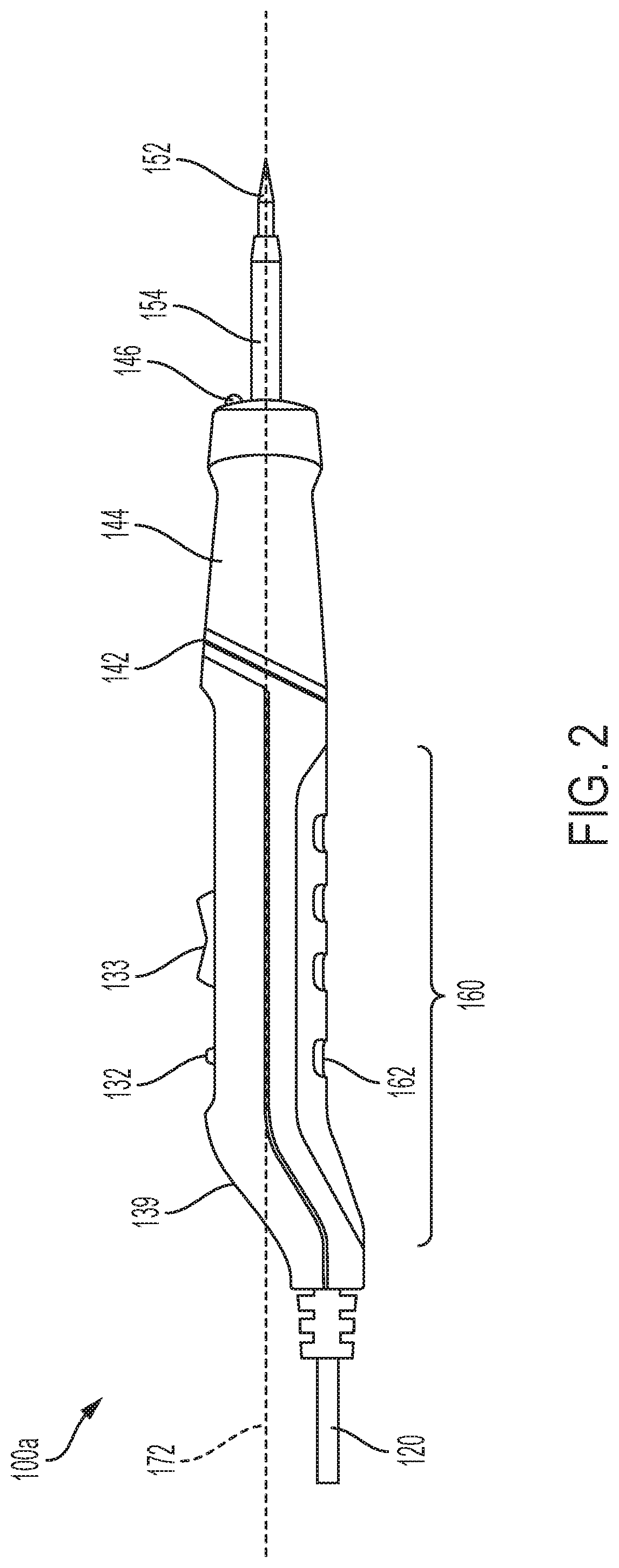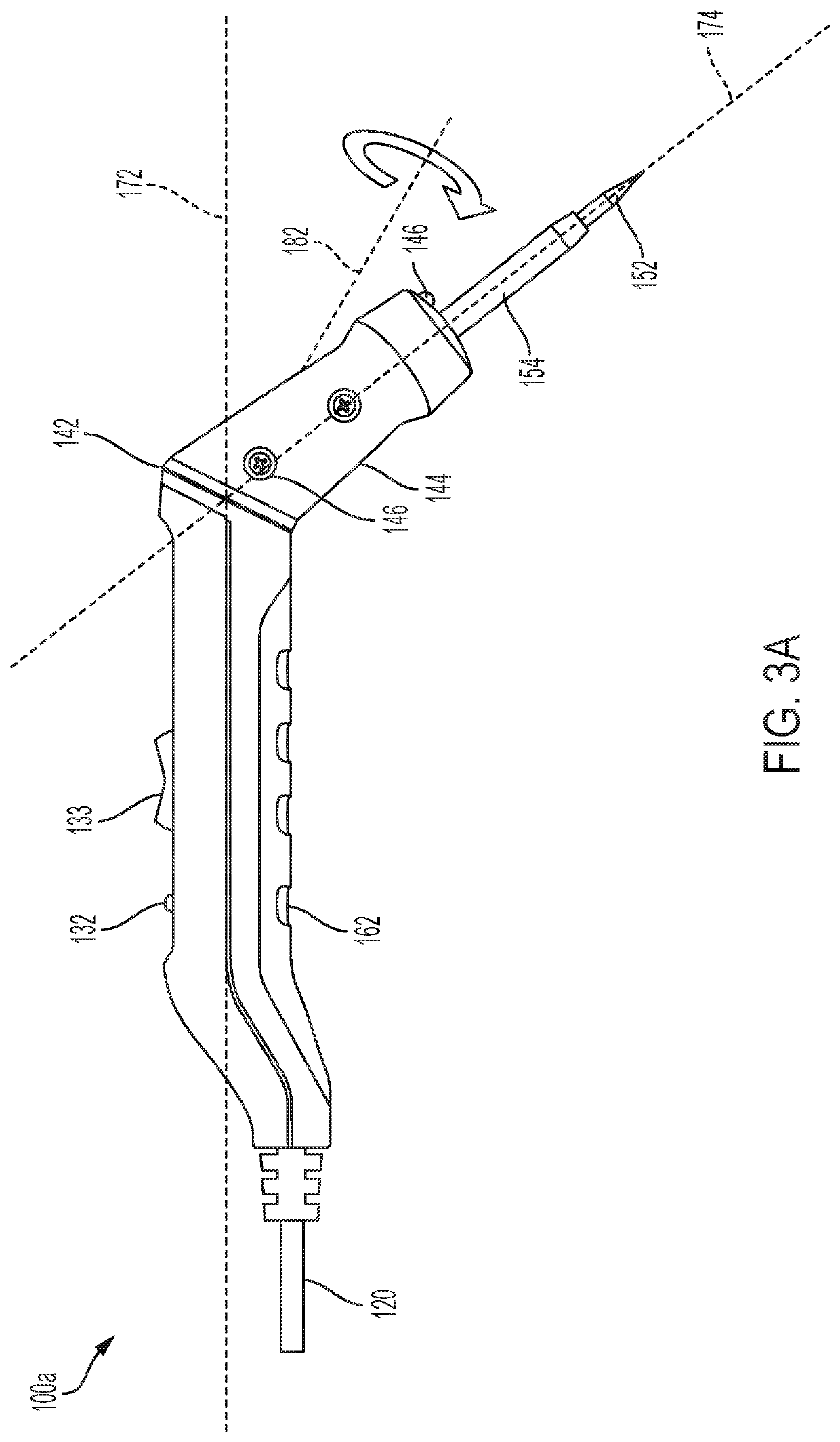Electrical probe
a multimeter and probe technology, applied in the field of electronic multimeter systems and methods, can solve the problems of misplaced terminals, long terminals, and inability to maneuver in tight spaces, and achieve the effect of facilitating contact of the conductive tip
- Summary
- Abstract
- Description
- Claims
- Application Information
AI Technical Summary
Benefits of technology
Problems solved by technology
Method used
Image
Examples
Embodiment Construction
[0030]Referring now to the drawings, various embodiments of a probe device are shown for measuring attributes and / or applying power to an electronic circuit under test.
[0031]Probe device 100a, shown in FIGS. 1-3A, can have rotatable probe body 140 that allows a user to extend the conductive tip 152 of probe connector 150 into areas which are difficult to reach into with a straight probe body. A user may apply the conductive probe tip 152 to a conductive surface of an electronic circuit under test where the conductive surface is blocked by an obstruction that cannot accommodate the straight probe device 100a shown in FIG. 2 from reaching. The user may then rotate probe body 140 relative to main body 130 as shown in FIG. 3A to change the orientation of the probe connector 150 relative to the orientation of the main axis of the probe body and / or handle so that the conductive probe tip 152 can reach behind the obstruction to contact the conductive surface of the electronic circuit under...
PUM
 Login to View More
Login to View More Abstract
Description
Claims
Application Information
 Login to View More
Login to View More - R&D
- Intellectual Property
- Life Sciences
- Materials
- Tech Scout
- Unparalleled Data Quality
- Higher Quality Content
- 60% Fewer Hallucinations
Browse by: Latest US Patents, China's latest patents, Technical Efficacy Thesaurus, Application Domain, Technology Topic, Popular Technical Reports.
© 2025 PatSnap. All rights reserved.Legal|Privacy policy|Modern Slavery Act Transparency Statement|Sitemap|About US| Contact US: help@patsnap.com



